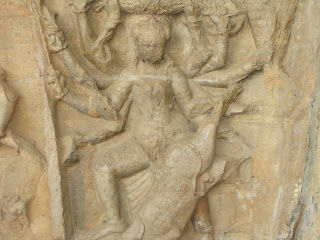Sanchi
Sanchi known for its "Stupas" is a small village in Raisen District of the state of Madhya Pradesh, India, it is located 46 km north east of Bhopal, and 10 km from Besnagar and Vidisha in the central part of the state of Madhya Pradesh. It is the location of several Buddhist monuments dating from the 3rd century BCE to the 12th CE and is one of the important places of Buddhist pilgrimage. It is a nagar panchayat in Raisen district in the Indian state of Madhya Pradesh. Toranas surround the Stupa and they each represent love, peace, trust, and courage. This world heritage site is well maintained and is open to public viewing from 8:00 AM to 5:00 PM. It takes about an hour and a half for a non-research visit of the site. Photography is allowed and audio guides are available.
The 'Great Stupa' at Sanchi is the oldest stone structure in India and was originally commissioned by the emperor Ashoka the Great in the 3rd century BCE. Its nucleus was a simple hemispherical brick structure built over the relics of the Buddha. It was crowned by the chatra, a parasol-like structure symbolising high rank, which was intended to honour and shelter the relics. It has four profusely carved ornamental gateways and a balustrade encircling the whole structure.
The Heliodorus pillar is a stone column that was erected around 110 BCE in central India in Vidisha near modern Besnagar, by Heliodorus, a Greek ambassador of the Indo-Greek king Antialcidas to the court of the Sunga king Bhagabhadra. The site is located only 5 miles from the Buddhist stupa of Sanchi.
 |
| The Bhimbetka rock shelters are an archaeological World Heritage site located in Raisen District in the Indian state of Madhya Pradesh. The Bhimbetka shelters exhibit the earliest traces of human life in India and deliver traces of dance from prehistoric times; a number of analyses suggest that at least some of these shelters were inhabited by hominids like homo erectus more than 100,000 years ago. Some of the Stone Age rock paintings found among the Bhimbetka rock shelters are approximately 30,000 years old (Paleolithic Age). |
 |
| BHIMBETKA |































































No comments:
Post a Comment